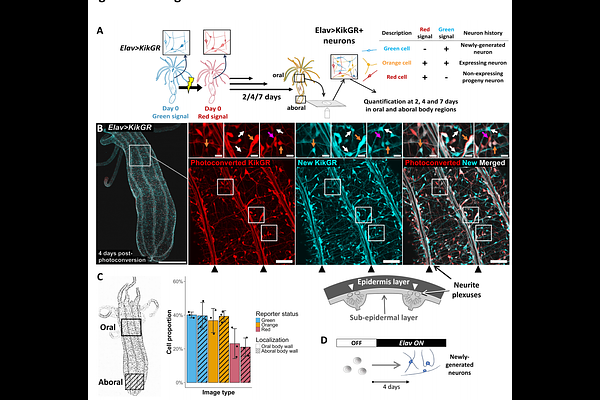Cellular and transcriptional trajectories of neural fate specification in sea anemone uncover two modes of adult neurogenesis

Cellular and transcriptional trajectories of neural fate specification in sea anemone uncover two modes of adult neurogenesis
Plessier, F.; Marlow, H.
AbstractWhile neurogenesis is largely restricted to early life stages in animals, some taxa (including cnidarians, planarians and acoels) display lifelong neurogenic abilities. The cellular lineages and transcriptional programs underlying this process remain poorly understood in cnidarians. Combining reporter tracing and single-cell transcriptomics, we identify adult neurogenic trajectories in the sea anemone Nematostella vectensis. We uncover two distinct mechanisms: direct differentiation of peptidergic neurons from a multipotent progenitor pool, with identities specified proportionally to existing populations, and a stepwise maturation of cnidocytes (specialized cnidarian neural cells), marked by a transcriptionally distinct intermediate stage. Neural fate commitment is characterized by transient SoxC expression, with a homeodomain code associated with neural identities. These modular strategies support continuous neurogenesis and suggest that neural fate specification may use ancestral principles shared with bilaterians. Our study provides a foundational framework for understanding the mechanisms underlying the adult specification of neural cells and their evolutionary diversification across animal lineages.